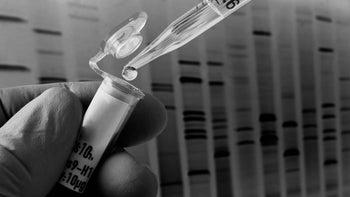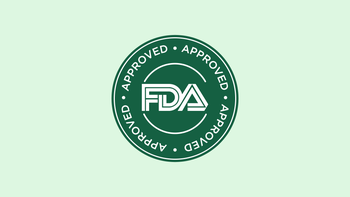GoodRx Guide
What Is Gene Therapy?
Gene therapy definition
Gene therapy medications aim to treat or fix certain cancers and genetic disorders. They do so by correcting or replacing altered or missing genes that are thought to be causing the condition.
These conditions are tied to your DNA, which come together to form genes. Your genes are a central part of who you are and how your body works. So if one or more genes aren’t functioning like they should, it’s possible to develop a serious health condition. Some genetic changes may be present at birth, while others can pop up throughout your life.
A handful of gene therapy medications are already FDA approved, and we’re expecting to see many more as time goes on.
How does gene therapy work?
Gene therapy works in a number of ways. Some gene therapy medications treat medical conditions by replacing damaged or missing genes in your body. Others turn off problematic genes, and some instruct cells on how to perform new tricks to better fight diseases like cancer.
But how do they do this? How do new and improved genes merge with our own genes? A vector — which you can think of as a special delivery truck — is key. These genes sit inside of a vector in order to reach DNA in the nucleus (center) of our cells.
This process can happen either inside or outside of your body. In vivo gene therapy is when a gene therapy medication, using a vector, is directly injected into your body. Ex vivo gene therapy is a bit more complicated. This is when blood cells are taken from your body, genetically modified in a lab, and then infused back into your body as gene therapy medication.
When it comes to administration, gene therapies are usually given as a single-dose treatment. They’re typically infused into a vein. But they can also be injected or applied to different parts of your body, like your skin or eyes.
Gene therapy uses
Several gene therapy medications are already available in the U.S. These medications are discussed below, but they’re approved to treat:
Certain types of leukemia
Certain types of lymphoma
Inherited retinal dystrophy
Spinal muscular atrophy (SMA), an inherited disorder that affects spinal nerves
Cerebral adrenoleukodystrophy (ALD), an inherited disorder that causes brain inflammation
Beta thalassemia, an inherited blood disorder
Duchenne muscular dystrophy (DMD), an inherited muscle disorder
Dystrophic epidermolysis bullosa, an inherited disorder that causes skin blisters
What’s more, many other gene therapy medications are being researched in clinical trials. In more advanced phase 3 clinical trials, medications are being studied for safety and effectiveness in conditions like:
Sickle cell disease (SCD)
Sanfilippo type A, an inherited disorder that affects metabolism
FDA-approved gene therapy medications
At this time, the FDA has approved a number of gene therapy medications. They include:
Abecma (idecabtagene vicleucel)
Breyanzi (lisocabtagene maraleucel)
Kymriah (tisagenlecleucel)
Tecartus (brexucabtagene autoleucel)
Yescarta (axicabtagene ciloleucel)
Carvykti (ciltacabtagene autoleucel)
Skysona (elivaldogene autotemcel)
Zynteglo (betibeglogene autotemcel)
Imlygic (talimogene laherparepvec)
Luxturna (voretigene neparvovec-rzyl)
Zolgensma (onasemnogene abeparvovec-xioi)
Hemgenix (etranacogene dezaparvovec-drlb)
Adstiladrin (nadofaragene firadenovec-vncg)
Elevidys (delandistrogene moxeparvovec-rokl)
Roctavian (valoctocogene roxaparvovec-rvox)
Vyjuvek (beremagene geperpavec-svdt)
The first six medications in this list are all chimeric antigen receptor (CAR) T-cell therapy medications. CAR T-cell therapies are ex vivo medications, described above. The CAR T-cell process enhances and trains T cells from your immune system to more effectively fight cancer cells. Skysona and Zynteglo are also ex vivo medications. The last seven medications in the list are in vivo medications that treat different health conditions, while Vykuvek is a topical product.
As mentioned, many more gene therapy medications are being studied in clinical trials. Health experts are expecting to see many more medications obtain FDA approval in the coming years.
Side effects of gene therapy
Like all medications, gene therapy medications can cause side effects. Some are manageable and go away with time, but others are more serious.
Examples of common side effects include:
Pain or irritation where the medication was injected or infused
Nausea and vomiting
Diarrhea
Tiredness
Dizziness
Examples of potentially serious side effects include:
Immune-related side effects, including cytokine release syndrome (CRS)
Certain neurological problems, including delirium, confusion, and tremors
Liver damage
Serious infection
However, specific side effects and risks vary for everyone. And because these medications are still new, we don’t know much about long-term side effects, if any. Your healthcare provider and pharmacist can tell you more information about specific side effects you can expect.
Pros and cons of gene therapy
As with any treatment, gene therapy medications have both benefits and risks. It’s important to consider these qualities before deciding whether one such therapy is right for you.
Top pros of gene therapy:
If other medications haven’t been successful, gene therapy could step in and make a difference.
Gene therapy is usually a single-dose treatment. Other medications generally need to be taken consistently for a long period of time.
These medications aim to get to the root of a problem — they don’t just manage symptoms of a condition.
Common complaints (cons) about gene therapy:
Before insurance or discounts, the sticker price of gene therapy is generally high.
Gene therapy is relatively new, and long-term side effects are still being researched. Serious, short-term side effects are also possible.
Some people question the ethics of gene-editing technologies.
How much does gene therapy cost?
Gene therapy medications can be very expensive, with or without insurance. In fact, the most expensive medication in the U.S. is reported to be a gene therapy medication — Hemgenix. It’s estimated to cost about $3.5 million without any discounts.
Other gene therapy medications are slightly less expensive, but they’re still pricey. For instance, estimations price Skysona at about $3 million, Zynteglo at about $2.8 million, Zolgensma at about $2.3 million, and so on.
If you have insurance, your plan provider can tell you more about your expected out-of-pocket costs. And regardless of your insurance status, many gene therapy manufacturers offer some sort of financial assistance.
If you’re interested in receiving a gene therapy product that’s still in clinical trials, those medications are accessible at no cost. If you want to participate in a clinical trial for an upcoming gene therapy medication, talk to your healthcare provider for more information to see if you might be eligible.
Gene therapy FAQs
None of the currently approved gene therapy medications offer a definitive cure for their approved use. But in the future, researchers hope to create gene therapy that can cure a previously incurable health condition.
It depends on the medication and your treatment goals. Some gene therapy medications are only used after multiple previous treatment attempts haven’t worked well. This is typically the case for cancer treatment. But for genetic or inherited conditions like SMA and retinal dystrophy, gene therapy may be considered earlier on in treatment or even before symptoms start.
They’ll likely always be pricey, but there’s hope that they’ll be less expensive as time goes on. Health experts, insurance companies, and other groups are looking to find ways to make gene therapy medications more affordable — especially since we’re expecting to see many more become available in the future.
But on the other hand, some health experts also point out that treating tough-to-fight illnesses over many months to years with other treatments is similarly expensive.
It depends. There’s no concrete recommendation for this. The official labeling for gene therapy medications don’t speak about alcohol concerns. However, it’s known that alcohol can affect your health in many ways. Talk to your healthcare provider first about whether you can safely use alcohol with your current therapy.
References
ALD Connect. (n.d.). Cerebral ALD.
American Cancer Society. (2021). CAR T-cell therapy and its side effects.
American Society of Gene + Cell Therapy. (2021). Blood cancers and CAR T-cell therapy.
American Society of Gene + Cell Therapy. (n.d.). Gene and cell therapy FAQ’s.
Amgen. (2021). Imlygic [package insert].
Bulcha, J. T., et al. (2021). Viral vector platforms within the gene therapy landscape. Signal Transduction and Targeted Therapy.
CAR T Cell Science. (n.d.). CAR T cell therapy process.
Garrison, L. P., et al. (2021). Gene therapy may not be as expensive as people think: challenges in assessing the value of single and short-term therapies. Journal of Managed Care & Specialty Pharmacy.
Janssen Biotech. (2022). Carvykti [package insert].
Kansteiner, F., et al. (2023). Most expensive drugs in the US in 2023. Fierce Pharma.
Kelly, C. (2021). New payment models for cell, gene therapies unlikely to originate with Medicare – former official. PharmaIntelligence.
MedlinePlus. (2020). Mucopolysaccharidosis type III.
Muscular Dystrophy Association. (n.d.). Duchenne muscular dystrophy (DMD).
Naddaf, M. (2022). $3.5-million hemophilia gene therapy is world’s most expensive drug. Nature Pharmaceuticals.
National Center for Advancing Translational Sciences. (2023). Beta-thalassemia.
National Heart, Lung, and Blood Institute. (n.d.). Genetic therapies.
National Hemophilia Foundation. (n.d.). Hemophilia A.
National Hemophilia Foundation. (n.d.). Hemophilia B.
National Human Genome Research Institute. (n.d.). Gene.
National Human Genome Research Institute. (n.d). Genetic disorders.
National Institute of Diabetes and Digestive and Kidney Diseases. (n.d.). Diabetic neuropathy.
National Organization for Rare Disorders. (n.d.). Epidermolysis bullosa.
Pfizer. (n.d.). Gene therapy: Genes as medicine.
QPS. (2021). Robust cell and gene therapy pipeline targets a range of diseases.
Shimabukuro-Vornhagen, A., et al. (2021). Cytokine release syndrome. Journal for ImmunoTherapy of Cancer.
U.S. Food and Drug Administration. (2021). Approved cellular and gene therapy products.
U.S. Food and Drug Administration. (2022). FDA approves first adenoviral vector-based gene therapy for high-risk Bacillus Calmette-Guérin unresponsive non-muscle invasive bladder cancer.
U.S. Food and Drug Administration. (2022). How gene therapy can cure and treat diseases.
U.S. Food and Drug Administration. (2023). FDA approves first gene therapy for adults with severe hemophilia A.
U.S. Food and Drug Administration. (2023). FDA approves first gene therapy for treatment of certain patients with Duchenne muscular dystrophy.
U.S. Food and Drug Administration. (2023). FDA approves first topical gene therapy for treatment of wounds in patients with dystrophic epidermolysis bullosa.
Wong, C. H., et al. (2020). Estimating the financial impact of gene therapy. medRxiv.
YourGenome. (2021). What is DNA?
















